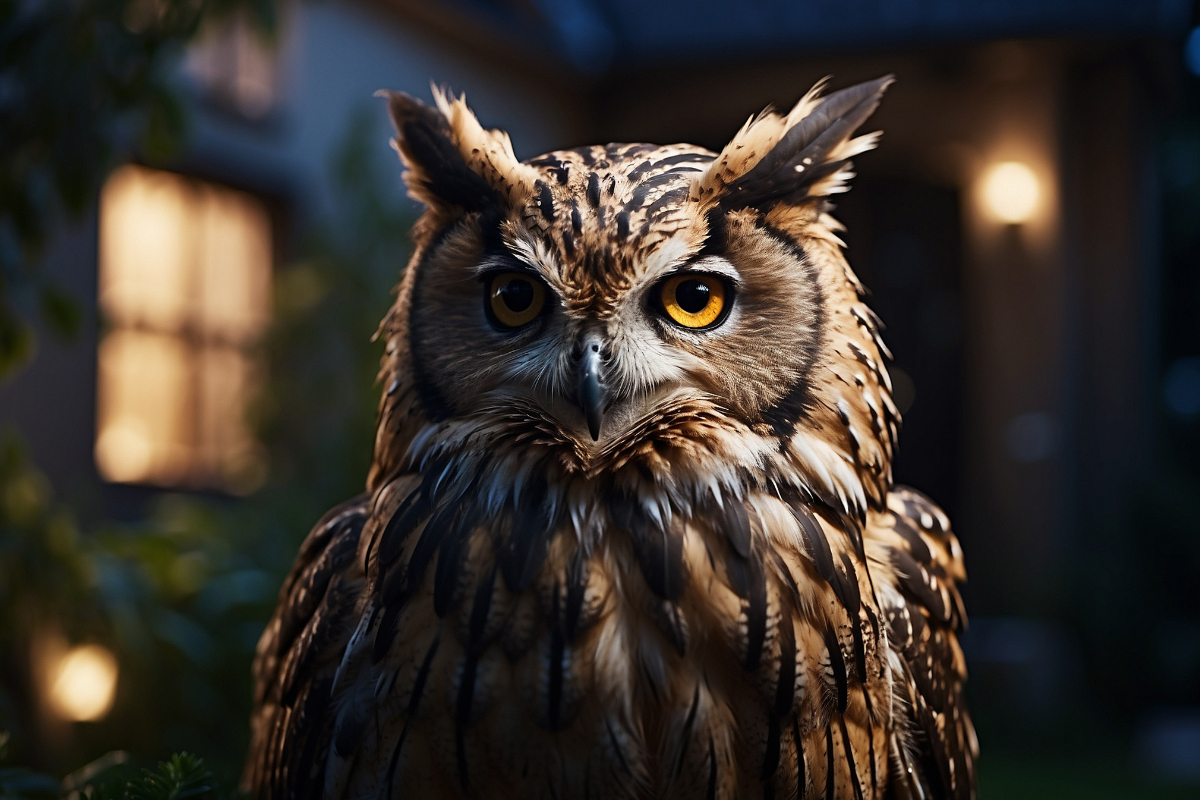Owls and hummingbirds are both fascinating creatures, but do owls really hunt and eat hummingbirds? This article will delve into the topic, exploring which owl species are the main culprits, why they target hummingbirds, and how hummingbirds try to avoid becoming owl prey. We will also highlight some interesting abilities of both owls and hummingbirds. Finally, we will assess the likelihood of owls successfully catching hummingbirds.
Key Takeaways:
- While it is true that some owl species, such as Great Horned Owls, opportunistically hunt hummingbirds at night when their defenses are lowered, documented cases of owls catching hummingbirds are relatively rare.
- Owls rely on their stealth, powerful talons, and sharp vision to capture their agile prey.
- Hummingbirds, on the other hand, have the speed and maneuverability to evade predators when they are active.
Do Owls Hunt Hummingbirds?
In short, yes, some owl species have been known to catch and eat hummingbirds, although it is not a common occurrence. Great Horned Owls, in particular, are large and powerful predators that have a diverse diet, ranging from small rodents to skunks and cats. These owls, along with other nocturnal species, take advantage of sleeping hummingbirds, especially during migration seasons when the populations mix more frequently.
But why would an owl go after such a tiny bird? The answer is simple: sleeping hummingbirds are easy targets. Hummingbirds have high metabolisms and need a constant supply of food to fuel their energy needs. To conserve energy overnight, they enter a hibernation-like state called torpor, where their metabolic rate and body temperature drop significantly. This makes them vulnerable to predators like owls.
Owls have several adaptations that give them an advantage in capturing hummingbirds. Their specially adapted feathers allow them to fly silently, enabling them to sneak up on unsuspecting sleeping hummingbirds. Additionally, Great Horned Owls have incredibly strong talons, capable of exerting forces over 300 psi, which allows them to instantly kill small prey. Owls also have excellent low-light vision, thanks to extra rod cells in their eyes, and their satellite dish-like faces enhance their directional hearing, making it easier for them to locate sleeping hummingbirds.
Fascinating Bird Abilities:
Both owls and hummingbirds possess remarkable evolutionary adaptations that contribute to their survival:
Owls:
- Silent flight, thanks to their specialized feather design.
- 360-degree head rotation, made possible by extra vertebrae.
- Asymmetrical ear placement for directional hearing.
- Extremely powerful feet and sharp talons.
Hummingbirds:
- Beating wings up to 80 times per second, enabled by shoulder joints that rotate 360 degrees.
- The ability to reverse direction instantly by altering the angle of their wings.
- Iridescent, light-reflecting plumage for camouflage and mating displays.
- Long, specially adapted tongues that allow them to feed on nectar while hovering.
- High-speed dives and climbs to evade predators.
These incredible bird abilities highlight the power of evolutionary adaptation. Owls have perfected stealth hunting, while hummingbirds have specialized in agile maneuvering and feeding while hovering.
Likelihood of Hummingbirds Becoming Prey:
While it is true that owls can prey on hummingbirds, several factors limit the frequency of such occurrences:
- Many owl species prefer small mammals as prey, rather than birds.
- Hummingbirds have evolved camouflage while sleeping, making them difficult to spot.
- Their speed and maneuverability decrease the chances of capture while they are active.
- Owls primarily hunt by sight and sound, and hummingbirds make very little noise while perching.
- Hummingbird populations have increased due to backyard feeders, providing them with ample food sources.
Therefore, while owls are capable of preying on hummingbirds, the various adaptations of both species make documented cases relatively rare. The highest risks occur when hummingbirds are sleeping, migrating, or facing limited food sources.
Conclusion:
In the ongoing evolutionary arms race, owls have developed exceptional stealth hunting skills to capture agile prey like hummingbirds under the cover of darkness. Hummingbirds, on the other hand, rely on their speed, maneuverability, and camouflage to defend themselves. While owls do opportunistically prey on hummingbirds, the adaptations of both species have limited this from becoming a frequent occurrence.
So, bird enthusiasts can enjoy watching these aerial masters, knowing that the marvelous abilities of hummingbirds provide strong defenses against predators like owls that hunt under the cloak of night.
